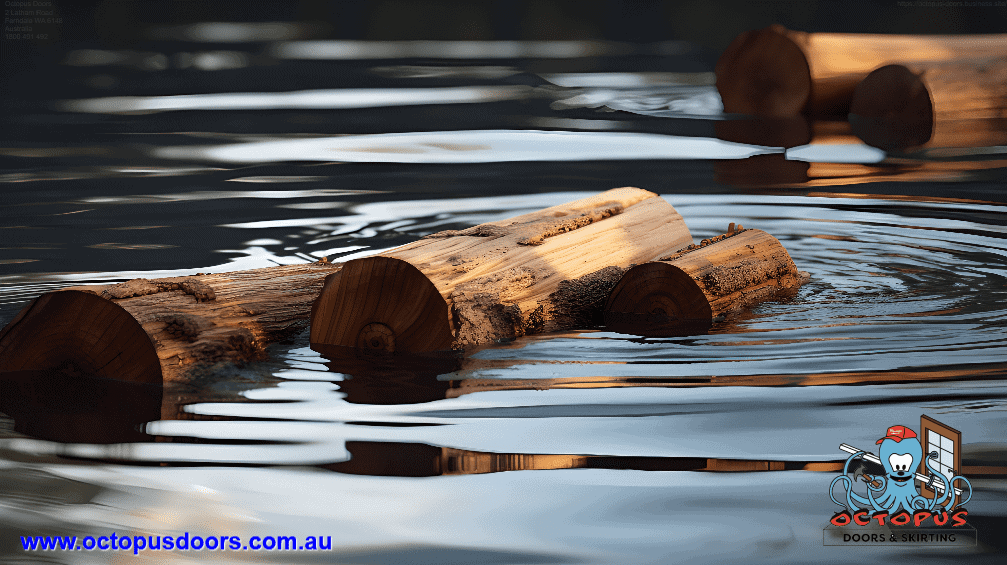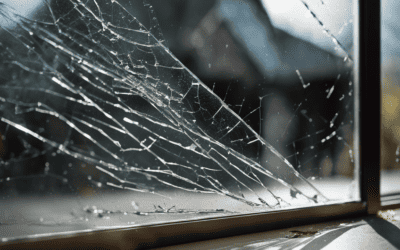
You’re an ambitious woodworker, passionate about creating stunning pieces that showcase the beauty and versatility of wood. Contrary to popular belief, you’ve heard whispers about a mystical type of wood that sinks in water. Curiosity piqued, and you set off on a quest to learn more about this elusive material.
Welcome, inquisitive woodworker, to your ultimate resource on the considerations when using wood that sinks in water.
(adsbygoogle=window.adsbygoogle||[]).push({})
Table of Contents
Introduction To Sinking Wood
Wood may float or sink in water, but what exactly separates these two categories? As you may have guessed, it all comes down to the density of the wood relative to the density of water. Highly dense wood species possess unique characteristics not found in their lighter counterparts.
In short, sinking wood is denser than water, making it a unique and sought-after material for certain applications. However, there are several factors one must consider when working with sinking wood.
“The density and hardness of sinking wood make it an appealing choice for furniture makers and woodworkers alike, but working with this unique material can present challenges,” says Ross Adams, a respected woodworker and master craftsman.

The Science Behind Sinking Wood: Density
Water has a density of 1 g/cm³. For wood to sink, its density must be greater than that.
Although most wood species have a density lower than water, there are few that surpass this threshold, opening up a world of possibilities for those willing to explore these rarities. But why are these woods denser than water? A combination of factors, including the wood’s structure and the concentration of lignin and cellulose within it, are responsible for this property.
(adsbygoogle=window.adsbygoogle||[]).push({})
Types Of Sinking Wood
Lignum Vitae (Guaiacum officinale)
Lignum Vitae, also known as the “Tree of Life,” is a truly exceptional wood species. Native to the Caribbean and the northern coast of South America, Lignum Vitae boasts an unrivalled combination of strength, durability, and density, making it the perfect choice for applications where these qualities are essential.
Key Characteristics:
- Density: Topping the charts with a density ranging between 1.2 to 1.4 g/cm³, Lignum Vitae is the densest wood in the world.
- Working Properties: Its oily composition yields a natural lubrication that allows for smooth cutting and minimal tool wear, despite its extreme hardness—up to 4,500 lbs on the Janka scale.
- Colour: Lignum Vitae exhibits a beautiful range of colours, from a pale yellow heartwood to a deep, rich green.
- Applications: Its outstanding properties make it ideal for heavy-duty engineering applications such as bearings, propeller shafts, and mallet heads. Additionally, its vibrant colours make it a popular choice for ornamental turning and heirloom woodworking projects.
Black Ironwood (Olea laurifolia)
Black Ironwood, found in the southern regions of Africa, comes in as a close second for the title of the world’s densest wood. Known for its attractive dark colour and exceptional resistance to wear, Black Ironwood has carved out a niche among artisans and industrialists.
Key Characteristics:
- Density: With a density of approximately 1.2 g/cm³, Black Ironwood is one heavyweight contender.
- Working Properties: This species is notoriously difficult to work with, as its extreme density (Janka hardness of 3,670 lbs) poses challenges for cutting and shaping. Carbide-tipped tools are highly recommended.
- Colour: As the name suggests, Black Ironwood displays a range of dark brown to black hues, often accented with streaks of lighter brown.
- Applications: Due to its remarkable resistance to wear, Black Ironwood is perfect for applications such as railroad ties, construction materials, and precision-engineered parts. Its highly attractive appearance also makes it an apt choice for custom furniture, sculpture, and turning projects.
Brazilian Ebony (Diospyros sp.)
Brazilian Ebony is characterized by its extreme hardness and rich dark colour. Found in the tropical regions of Central and South America, this highly sought-after material lends itself perfectly to furniture making and other woodworking projects, where both form and function are paramount.
Key Characteristics:
- Density: Brazilian Ebony’s density averages around 1.1 g/cm³, making it an impressive heavyweight in the world of woodworking.
- Working Properties: Due to its extreme hardness—up to 3,840 lbs on the Janka scale—Brazilian Ebony can be quite challenging to work with. However, sharp tools and slower cutting speeds can help tame this exotic beast.
- Colour: Exhibiting a deep, dark brown colour with streaks of black, Brazilian Ebony is strikingly beautiful and adds sophistication to any woodworking project.
- Applications: Its toughness, stability, and attractive appearance contribute to its popularity in the areas of high-end furniture making, cabinetry, and flooring. Moreover, its tonal qualities also make it an ideal choice for crafting musical instruments.
It’s vital to note that sourcing these rare woods responsibly is essential. Ensuring the use of ethically harvested and sustainably sourced materials will maintain the health of these ecosystems and prevent overexploitation.
| Wood Species | Density (g/cm³) | Janka Hardness (lbf) | Origin | Notable Applications | Key Features |
|---|---|---|---|---|---|
|
Lignum Vitae (Guaiacum officinale) |
1.2 – 1.4 | 4,500 | Caribbean and Northern South America | Bearings, propeller shafts, mallet heads, ornamental turning | Densest wood in the world, natural lubrication, vibrant colours |
|
Black Ironwood (Olea laurifolia) |
1.2 | 3,670 | Southern Africa | Railroad ties, construction materials, precision-engineered parts, custom furniture | Exceptional resistance to wear, dark colour, difficult to work |
|
Brazilian Ebony (Diospyros sp.) |
1.1 | 3,840 | Central and South America | High-end furniture, cabinetry, flooring, musical instruments | Extreme hardness, rich dark colour, stability, and tonal qualities for instruments |
| Woodworking Challenges | Sustainability Concerns | Historical Uses | Common Names | |
|---|---|---|---|---|
|
Lignum Vitae (Guaiacum officinale) |
Oily composition requires special attention when gluing; it should be pre-drilled before screwing | Overexploitation has led to CITES regulations: trade of this species is now regulated. | Traditional shipbuilding; used to create balls, pulleys, and other parts for ships | Tree of Life, Gaiac tree |
|
Black Ironwood (Olea laurifolia) |
Sharpening tools frequently is crucial due to the wood’s dense nature | African Black Ironwood is not currently listed in the CITES Appendices but should be used sustainably | Various traditional African tools and weapons; fence posts | Ironwood, Dead Man’s Hand |
|
Brazilian Ebony (Diospyros sp.) |
Difficult to work with due to its interlocked grain pattern and high-density blunting cutting tools | Brazilian Ebony has been overharvested, leading several species in the genus Diospyros to be listed on the IUCN Red List. | Ancient ebony was often used to make ornamental turning pieces in Europe, as far back as Roman times. | Ebony black or blackwood |

Sourcing And Sustainability
Given the rarity and high demand, the sustainability of sinking wood species has become a critical consideration. Organizations like FSC and PEFC work to promote responsible forestry, ensuring the long-term availability of these woods without harming the environment.
Before purchasing sinking wood, verify that your supplier is adhering to sustainable practices and holds certifications from such organizations.
Working With Sinking Wood
Though highly desirable, sinking wood can pose challenges during woodworking. The density and hardness can quickly dull standard tools and make shaping and cutting a laborious task.
Hand tools like chisels, goulettes, and hand planes, made from high-quality metal alloys or carbide-tipped, can help overcome these challenges. Other tips for working with sinking wood include using slower cutting speeds, more frequent sharpening of tools, and allowing for ample drying time to avoid warping or cracking.
“Working with sinking wood requires patience and good technique. Start with sharp tools and work slowly. Enjoy the journey—it’s a rewarding experience,” advises renowned woodworker Samantha Baker.
(adsbygoogle=window.adsbygoogle||[]).push({})
Applications And Potential Use Cases
Sinking wood is well-suited for a variety of applications, including:
- Intricately carved furniture
- Heavy-duty industrial components
- Musical instruments
- Luxury flooring
These woods’ longevity, resistance to wear and decay, and overall beauty lend themselves to projects that require lasting performance and aesthetic appeal.
Expert Tips And Tricks
- Make responsible choices by exploring alternative local species with similar characteristics to minimize the environmental impact of your projects (sources like the Wood Database are invaluable for this).
- Connect with other woodworkers to share knowledge and experiences when dealing with sinking wood. You never know what clever tips you might learn from fellow enthusiasts.
- Regularly monitor your tools and equipment to extend their life and ensure accurate, clean cuts, especially when working with sinking wood.
Discovering the world of sinking wood can offer endless opportunities and inspire innovation in your woodworking ventures. By understanding the factors to consider, from sourcing to working with the material, you’re well on your way to creating masterpieces unlike any other. Happy crafting!
(adsbygoogle=window.adsbygoogle||[]).push({})
Related Articles:

How to Keep Your Shed Door Open: A Comprehensive Guide
Having a shed in your backyard can be incredibly useful for storing tools, equipment, and other items you need access to while working outside. However, one of the most frustrating things about sheds is having the door constantly slam shut while you’re trying to bring…

Can You Drill into a Wooden Door? The Complete Guide
Drilling holes in wooden doors is a common DIY task needed for installing door knobs, locks, handles, hinges and more. But it does require using the proper tools and techniques to avoid splitting the wood or causing other damage. This comprehensive guide’ll cover…

Doors Shorter Than 80 Inches: A Complete Guide
Doors are an essential part of any home. They provide privacy and security and help control airflow and noise. While most modern interior doors are 80 inches tall, also known as 6/8 doors, older homes often have shorter doors that don’t conform to today’s standards….

How to Remove a Doorknob with No Visible Screws: The Complete Step-by-Step Guide
Removing a doorknob may seem daunting, but you can complete this project quickly and easily with the right instructions. This comprehensive guide will walk you through the entire process of removing a doorknob with no visible screws. When You Need to Remove a Hidden…

How Thick is the Wood on a Door Jamb? A Complete Guide
A door jamb is a vital component of any door frame. The vertical portion forms the door opening and allows the door to swing open and closed. The thickness of the wood on a door jamb can vary depending on the type of wall construction and door being installed. Here is…

How Much Can You Cut Off a Solid Wood Door? A Complete Guide
Solid wood doors are a classic choice for home entryways. Made entirely from natural wood, these doors provide a traditional look and durability. However, solid wood doors come in standard sizes. You may need to cut down a solid wood door to properly fit the entrance….

Are Bifold Doors Good for Bathrooms?
Bifold doors are a popular choice for many rooms in the home, especially living areas like kitchens and dining rooms, where they help connect indoor and outdoor spaces. But how well do they work in bathrooms? Here’s a comprehensive look at the pros and cons of using…

Are 8 Foot Doors Worth the Money? A Comprehensive Guide
Upgrading to 8-foot doors can transform the look and feel of your home. But are taller doors worth the extra investment? This in-depth guide examines the pros, cons, costs and considerations of installing 8-foot interior and exterior doors. What are 8 Foot Doors?…

Sliding Glass Doors: The Hidden Shattering Dangers
I’ve always loved the sliding glass doors in my home – they bring in so much natural light and offer a stunning view of the outdoors. But little did I know, these doors can hide some dangerous risks. One day, I was startled by a loud crash as my sliding glass door…

Unlock the Secrets: Magnetic Garage Doors Revealed
I’ve always been fascinated by ways to enhance my house’s curb appeal. Recently, I stumbled upon a unique solution – magnetic garage doors. These innovative additions add style to your garage and offer practical benefits. In this article, I’ll unlock the secrets…
Message Us
Get In touch below. Ask Any Question or Start a Free Quote
Call Us
1800 491 492

I’m James Davis, a carpenter with eight years of experience in carpentry services, repairs, installations, renovations, and maintenance of interior doors. I have a diploma in carpentry and joiner trade from the Education Skills Australia Institute and take pride in delivering high-quality results to ensure customer satisfaction. I’m a blog writer for Octopus Doors Company and enjoy sharing my knowledge and tips on maintaining security measures and choosing the right door materials, paints, or handle styles. I specialize in custom-made interior doors and strive to make every home look fabulous. Contact me anytime for help with door-related issues.